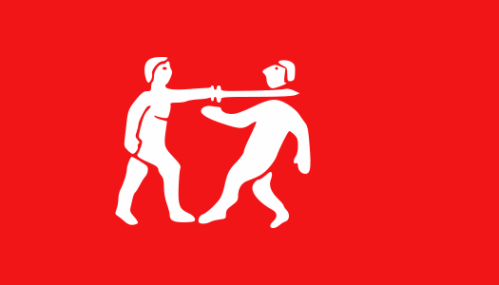
The Benin Empire was a powerful, though small, swath of what is now southern Nigeria, know best in modern times for its expressive ceremonial masks.

Benin Mask
Assumed to be made of ivory, there is a dark secret behind these eerie masks. And the key to that dark secret can be found on its flag (naturally.) Only a dedicated Harvard symbologist like yours truly could discern this hidden mystery from the depths of time. If you know anything of the fauna of the Niger Delta, you’ll know that the elephants that lived there in the 16th century (now extirpated) did not bear large tusks. They were said to have been elephants of the Gods, with their small tusks, no larger than the average okapi molar (which is preternaturally small, really.) This is important.
Upon investigating the flag, you’ll notice that the background color is red. This is the color of Benin goddess Baesh. Baesh is an anagram of the Biblical Queen of Sheba, who sent the ships of Tarshish asail in search of terebinth and myrrh. In the Niger Basin, myrrh was the incense associated with the color red. So there’s that. Mystical, right?
Now, when we investigate the symbols on this flag, the human figure on the right thrusting the sword is obvioulsy a symbol of the divine feminine. Obviously. The figure on the left with its lifting hairpiece is a symbol of the ravages of time. So the divine feminine is defeating the act of aging. The eternal goddess Baesh slaying time itself.
Which leads me to my paradign-shifting conclusion that some people would send an albino Beninese holy man to kill me over:
THE MASKS ARE MADE OF PEOPLE! THEY AREN’T MADE OF IVORY – HUMAN SKULLS WERE CARVED INTO MASKS! (Gross, right?)
*Thanks to alexandre van de sande for the flag suggestion.















